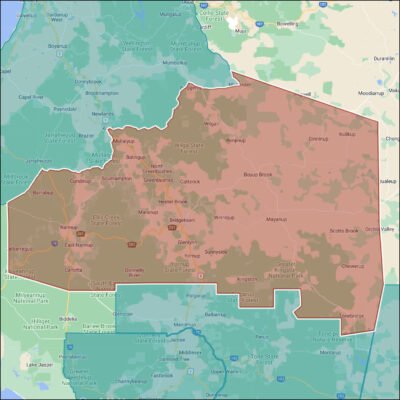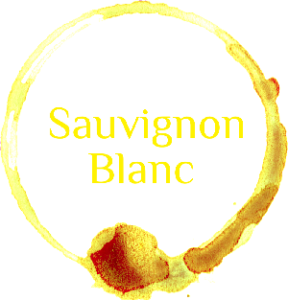The Blackwood Valley wine region is in the southwestern corner of Western Australia, just under 3 hours south of Perth. It forms part of the South West Australia wine zone, which it shares with Margaret River, Geographe, Manjimup, Pemberton, and Great Southern. Your wine tour starts in Balingup or Nannup, and follows the Blackwood Valley Tourist Drive through Bridgetown and Donnelly River. The extremely adventurous can also explore the region via the Bibbulmun Track. This is one of the world’s great long-distance walking trails, stretching 1000km from Kalamunda in the Perth Hills to Albany on the south coast, winding through the heart of the Blackwood Valley.
The region is centred around the Blackwood River, which winds through valleys and forests, creating stunning scenery and a unique environment for vineyards.
Although the Blackwood Valley has a rich agricultural history, viticulture did not begin until 1976, when the Fairbrass family planted the first vines at Blackwood Crest Vineyard. More vineyards were soon established, supporting a handful of wineries, with the region receiving official Geographical Indication (GI) status in 1998.
Blackwood Valley experiences a Mediterranean climate, with warm, dry summers and cool, wet winters. Cool nights and the region’s elevation highlight the fruit intensity.
Top Stats
Harvest
Late Feb to early Apr
Mean Jan temperature
20.7°C
Area of Vine
309 hectares
Altitude
35-379m
Growing season rainfall
187mm
Principal Varietals
Blackwood Valley is most definitely a white wine region. In 2023, only 23% of the region’s crush was used for red wines.
Sauvignon Blanc is the real crowd-pleaser in this region, accounting for 37% of the crush alone. The regional varietal is often characterized by its fresh, vibrant profile, thanks to its cooler climate and distinct terroir. Sauvignon Blancs from Blackwood Valley typically display bright aromas of citrus, green apple, and tropical fruits like passionfruit and pineapple. There are also hints of grassy or herbaceous notes, common in Sauvignon Blancs from cooler climates.
Local Semillon (20% of the 2023 crush) offers a unique expression of this grape variety and can show a spectrum of flavours, from fresh citrus and green apple in younger styles to more complex, honeyed, and nutty flavours with age. You might notice a balanced acidity and a subtle minerality from the region’s terroir, often giving these wines a crisp finish.
Shiraz is our first red in the top ten, equaling Semilon in quantity and offering a distinctive expression of this classic Australian varietal. Thanks to the region’s cooler temperatures, Shiraz from Blackwood Valley is typically more restrained and elegant than the bolder, full-bodied styles in warmer regions like the Barossa Valley. Expect notes of dark berries, plum, and black cherry, often complemented by hints of pepper, spice, and earthy undertones.
Chardonnay and Cabernet Sauvignon round off the big 5 with 9% each of the 2023 crush. Chardonnay offers a refined and often balanced style that reflects the region’s cool climate and varied terroir. It often features crisp acidity and a vibrant fruit profile, with flavours of green apple, citrus, and stone fruits like peach and nectarine. Some producers focus on creating a more mineral-driven, unoaked style, allowing the fruit and natural acidity to shine.
Cabernet Sauvignon grapes ripen slowly here, retaining acidity and developing a more structured, refined profile compared to warmer regions. Expect rich aromas of dark berries like blackcurrant, blackberry, and plum, often accented with hints of herbs, mint, and eucalyptus, typical of cool-climate Cabernets. The palate is often full-bodied, with firm tannins and balanced acidity contributing to a longer ageing potential. Some wines may exhibit secondary flavours of tobacco, cedar, or earthy notes from oak ageing, adding layers of depth and complexity.
Source: www.wineaustralia.com,









